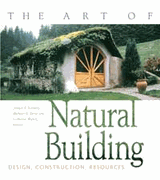
GEIGER RESEARCH INSTITUTE of SUSTAINABLE BUILDING
Home
About Us
What's New
Workshops
Certification
Training
Projects
Publications
House Plans
Image Galleries
SBE Directory
Resources
Consulting
Blog
Links
Contact Us
FREE Straw Bale Emergency Shelter Plans
Builders Without Borders Straw-Bale Construction Guides
The Last Straw -
The International Journal of Straw Bale and Natural Building
- Promoting natural building, and sustainable design and development, through research, training, education and consulting services.
U.S. forests have been poorly managed and are now choked with small diameter trees. Thinning these trees to reduce the risk of forest fires is a Forest Service priority, which are currently at a record high. With an inexpensive firewood permit, anyone can obtain this wood for building their home. Even though this wood could be used for firewood, it is more valuable as a building material.
The advantages of using small diameter wood for building your home include the following:
• Small diameter wood can provide all of the lumber for a house including studs, joists, plates, trusses, window and door frames, trim and other components. Wood-frame construction is the preferred building system in the U.S. because of its speed and ease of construction, but unfortunately most dimension lumber is not sustainably harvested. Using small diameter wood encompasses the advantages of wood-frame construction, but utilizes wood that improves the health of the forest and also reduces forest fires.
• Using locally available wood reduces construction costs and avoids supporting environmentally irresponsible lumber companies.
• Wood in the round is much stronger than standard dimension lumber and requires less processing. This means that smaller diameter logs can be used, with fewer parts. For example, only one-half as many trusses may be required because pole trusses can be set every 48” instead of every 24”.
• A $40 chainsaw guide can be used to mill purlins, joists, studs, plates and other components. The Beam Machine is one example of a low-cost chainsaw attachment that can mill straight edges on poles. More information on this attachment is available at Beam Machine.
• The fire resistance of poles is much higher than stick-framed trusses or engineered trusses (TJIs). Wood poles have a two-hour commercial fire rating in contrast to these other options that have a one-hour fire rating. And in the event of a fire, there is no toxic off-gassing - the leading killer in home fires.
• Timber-frame/pole construction is more aesthetically pleasing than wood-frame construction covered with sheetrock. The beauty of the wood is left exposed, honoring the tree from which it came. This is especially important to indigenous cultures that have a long tradition of building with natural materials, and who often dislike modern artificial materials.
• Very few tools are required to build simple pole trusses. If they are built in uniform sizes, workers can be trained to build them in a short amount of time.
Using small diameter wood creates local jobs with less reliance on highly processed materials that must be shipped long distances. This helps create jobs in four categories:
1. Logging - workers to cut, mill and deliver poles.
2. Truss manufacturing - workers to build roof trusses. This could be a cooperative effort, or an entrepreneurial cottage industry. Either way, the quality will be higher and more consistent if specially trained workers build the trusses.
3. Milling - workers to mill logs into purlins, studs, plates or joists. The simplest method uses a chainsaw and a $40 guide. Mass production methods with commercial sized equipment are even faster and more efficient.
4. Construction - workers to erect trusses, build walls, etc.
In conclusion, building houses with small diameter wood offers many advantages over other building systems. This approach provides all of the lumber for a house at lower cost than dimension lumber. Do-it-yourselfers can mill their own wood instead of buying it from a lumberyard. Fewer parts are required because wood in the round is stronger than dimension lumber. It reduces the fire danger in our forests and creates local jobs. Pole construction is also more aesthetically pleasing and fire-resistant than wood-frame construction. With all the advantages of small diameter wood, we should take a closer look at how to utilize this resource, that for many builders, is often near at hand.
GEIGER RESEARCH INSTITUTE OF SUSTAINABLE BUILDING
Crestone, Colorado 81131 Email: Contact Information

